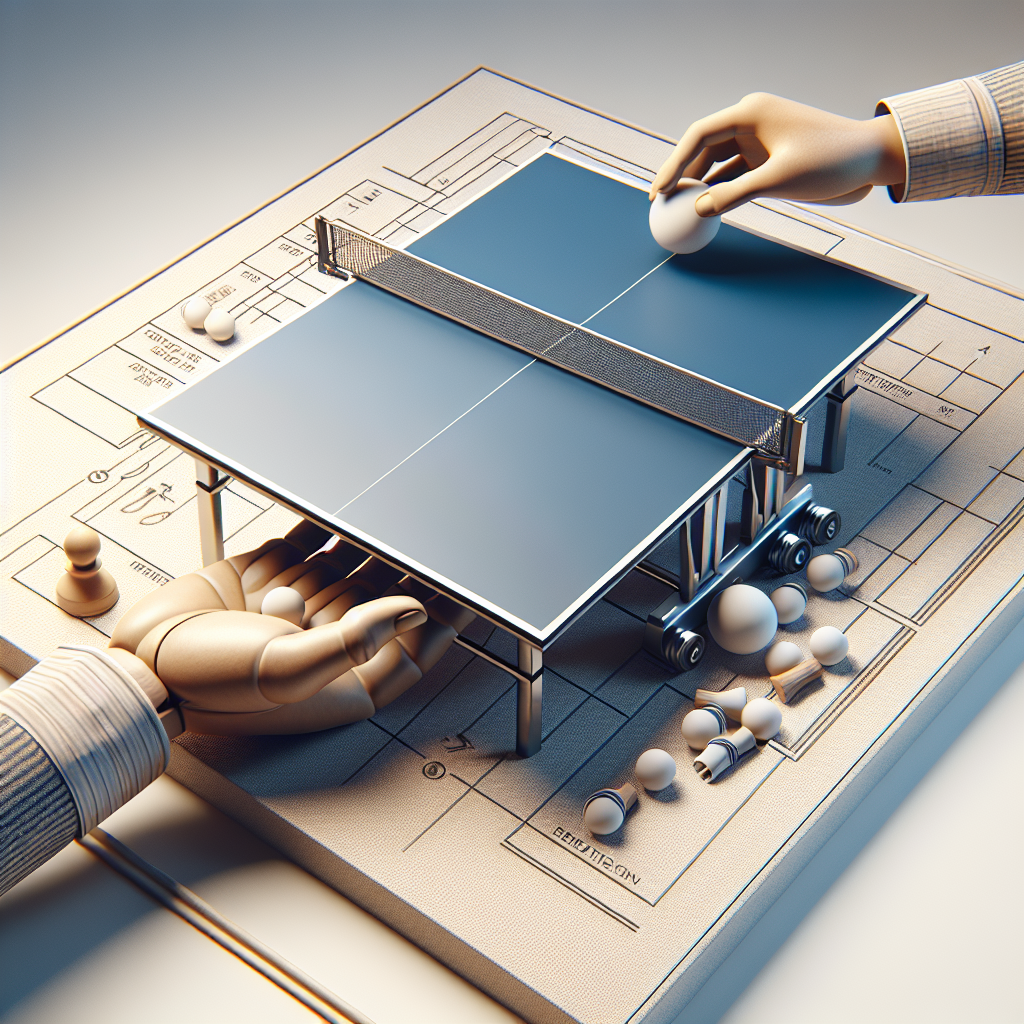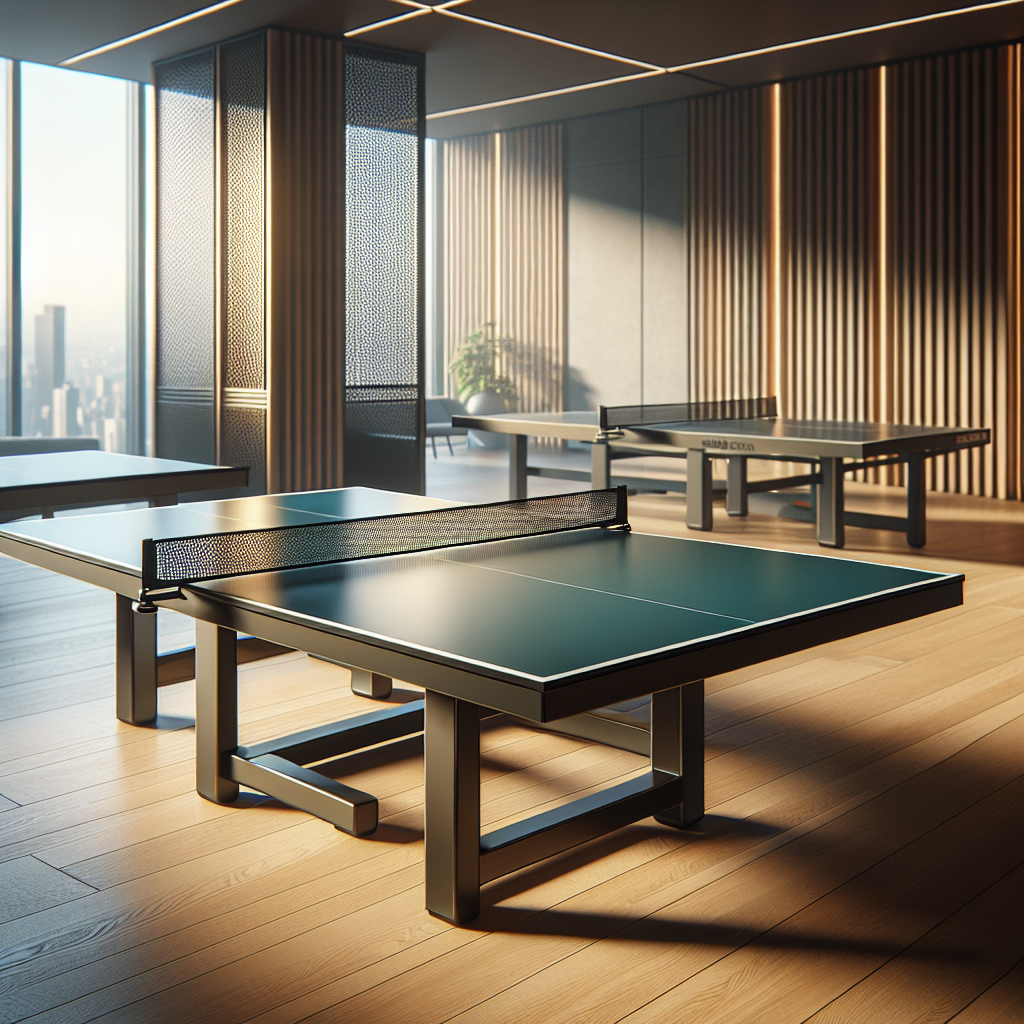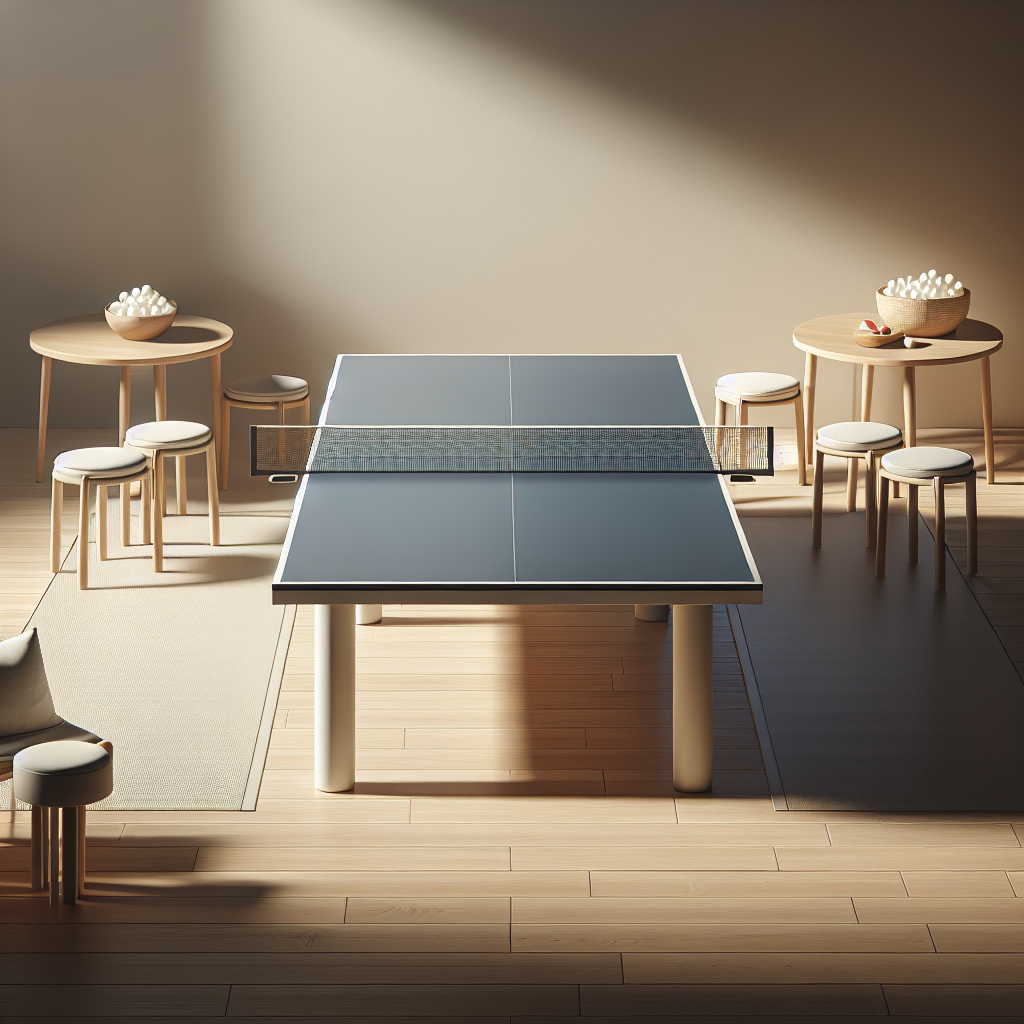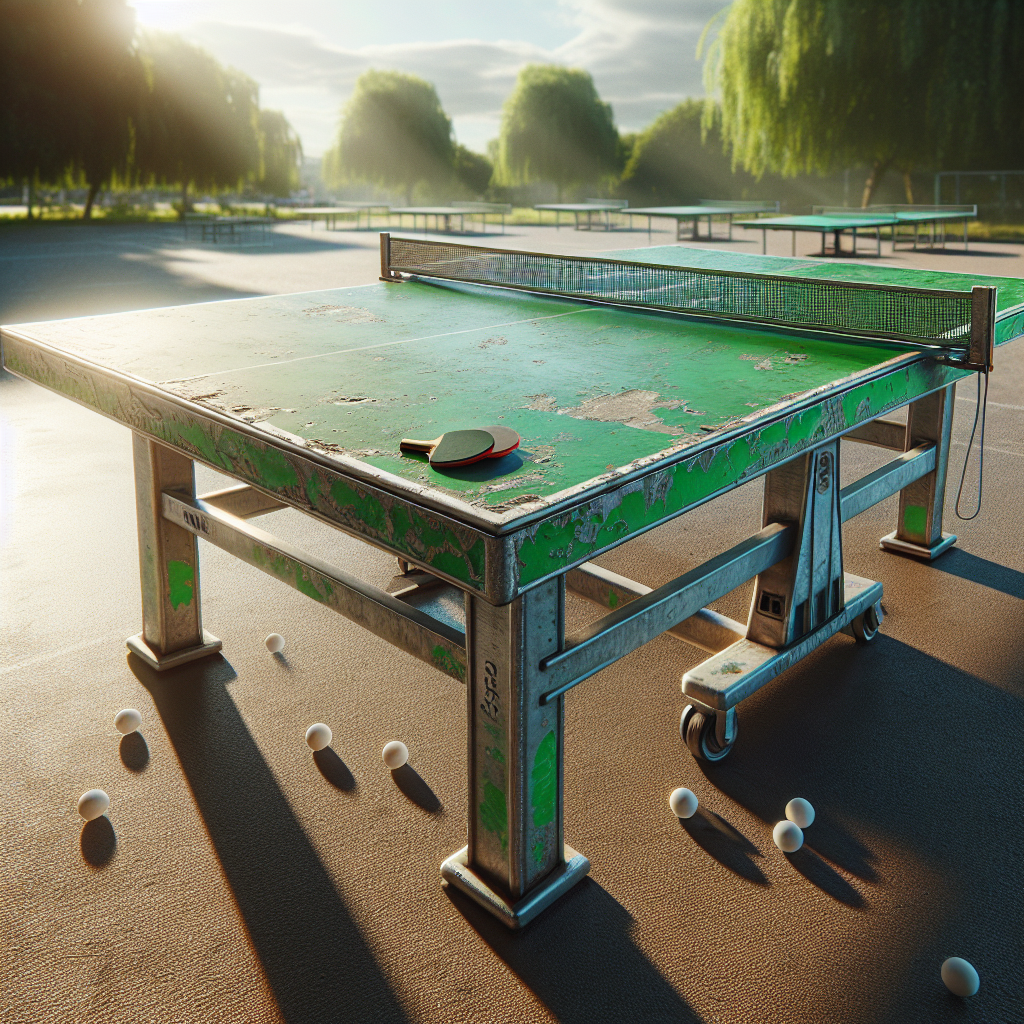Getting to Know Ping Pong Tables
If you’re into ping pong, knowing your table is key. Let’s break down the basics: size, materials, and what makes a good playing surface.
Table Size and Build
Ping pong tables, or table tennis tables, are built to specific standards. They measure 9 feet long, 5 feet wide, and stand 2.5 feet high. A 6-inch net splits the table in half. These measurements are set by the International Table Tennis Federation (ITTF) and are used in official matches.
The playing surface is usually made from particleboard, medium-density fiberboard (MDF), or plywood. These materials give you a smooth, sturdy surface for the game. The ITTF says the surface should be at least 22mm thick for competitions, but you can find tables with surfaces from 12mm to 25mm thick. Each thickness has its own feel and can change how the ball bounces and how fast the game goes.
| Thickness (mm) | Characteristics |
|---|---|
| 12-15 | Great for beginners or casual play. The ball bounce is lower and the game is slower. |
| 20-25 | Offers a higher, more consistent ball bounce, faster gameplay, and better resistance to warping. More durable and long-lasting. |
Surface and Bounce
The table’s surface is a big deal for how the game plays. A smooth, even surface means the ball bounces predictably, giving players better control.
Thicker tables (20-25mm) give a higher, more consistent bounce. This makes the game faster and more exciting. They also resist warping better, so they stay flat and stable over time (STIGA).
Thinner tables (12-15mm) are fine for beginners or casual players. They might not bounce the ball as high or fast, but they’re still fun for a relaxed game.
When picking a ping pong table, think about how serious you are about the game, your budget, the space you have, and what you like. No matter the thickness, a well-kept table with a smooth surface makes for a great game.
Knowing the size, materials, and surface of ping pong tables helps you play better and enjoy the game more. For more on the rules and how to play, check out our official table tennis rules.
Official Ping Pong Ball Specs
If you’re serious about ping pong, you gotta know the ball specs. The ball’s size, weight, material, color, and quality are all set in stone. Stick to these rules if you wanna play by the book and join official tournaments. Let’s break down what makes an official ping pong ball.
Size and Weight
The United States Table Tennis Association (USATT) says the ball’s gotta be 40mm in diameter. That’s 4cm for those who prefer metric. It should weigh exactly 2.7 grams. If your ball’s off, even by a smidge, it can mess up the game and make things unfair.
Material and Color
Ping pong balls used to be made of celluloid, but now they’re mostly plastic. The International Table Tennis Federation (ITTF) wants the ball to have a matte finish. This helps players see it better and cuts down on glare.
When it comes to color, the ITTF says you can go with white or orange. White balls are the go-to for tournaments because they stand out more. Orange balls are more for casual play. The color contrast helps players keep an eye on the ball.
Quality Ratings
Ping pong balls get rated from one to three stars. One-star balls are for newbies. Two-star balls are for those who know their way around a table. Three-star balls are the cream of the crop, used in top-tier competitions like the Olympics.
Three-star balls are the toughest and give the best bounce and speed. If you’re training for big leagues, these are your go-to.
Here’s a quick rundown of what you need to know:
| Spec | Value |
|---|---|
| Diameter | 40mm/4cm |
| Weight | 2.7g |
| Colors | White or Orange |
| Quality | One-star to Three-star |
Using the right ball makes the game fair and fun. Whether you’re just playing for kicks or aiming for the big leagues, the right ball can make all the difference.
Ping Pong Basics: Rules You Gotta Know
So, you’re ready to dive into the world of ping pong? Awesome! Let’s break down the must-know rules to keep your game fair and fun. We’ll cover how the game is set up, the nitty-gritty of serving, and the special rules for doubles play.
Game and Match Setup
In official ping pong, games go up to 11 points. But here’s the kicker: you gotta win by at least two points. So, if it’s 10-10, the game keeps going until someone pulls ahead by two. Matches are usually best three out of five games. So, win three games, and you’re the champ.
Serving Rules
Serving in ping pong isn’t just about whacking the ball. There are some rules to keep it fair. Each player serves two points in a row. But if the score hits 10-10, you switch servers after every point (PongFit).
When you serve, toss the ball straight up at least 6 inches, hit it on the way down, and make sure it bounces on both sides of the table. Mess this up, and you lose the point and the serve.
Want more details? Check out our article on ping pong serving rules.
Doubles Play
Doubles ping pong adds a twist. When serving in doubles, you gotta serve from the right side to the right side, diagonally across the table. After two serves, you and your partner switch spots.
During rallies, you and your partner take turns hitting the ball. The ball has to bounce on each side before the same player can hit it again. This keeps the game fair and exciting.
Curious about more doubles rules? Check out our article on ping pong doubles rules.
By nailing down these basics—game setup, serving, and doubles play—you’ll be ready to rock any ping pong match. Stick to these rules to keep things fair and fun. If you’re just starting out or need a quick refresher, don’t miss our guide on how to play ping pong.
Common Ping Pong Violations
To keep the game fair and fun, ping pong players need to know the common mistakes that can happen during a match. Here are three big no-nos: illegal volleys, serving slip-ups, and let calls and disputes.
Illegal Volleys
In ping pong, you can’t hit the ball before it bounces on your side of the table. If you do, your opponent gets the point (PongFit). This rule makes sure everyone gets a fair shot at returning the ball and keeps the rallies going.
Serving Slip-Ups
Serving is a big deal in ping pong, and there are rules to make sure it’s done right. One common mistake is reaching over the net to hit the ball. Do that, and you lose the point. Also, if you serve and the ball lands back on your side, that’s a no-go and you lose the point (Killerspin). Knowing these rules can save you from losing points for silly mistakes.
Let Calls and Disputes
A “let” in ping pong happens when certain things go wrong during a serve. For example, if the ball hits the net but still lands in play, you can’t call a let anymore according to rule 2.9.1.1. But in casual games, players often call a let if the serve hits the net, and everyone usually agrees. Disputes can happen if only one player notices the net touch, leading to arguments. Some folks suggest using an electronic device like in tennis to settle these disputes.
Knowing these common ping pong violations helps keep the game fair and fun. Players should check out the official ping pong rules to make sure they’re playing by the book. By sticking to the rules, everyone can enjoy competitive matches without any drama.








